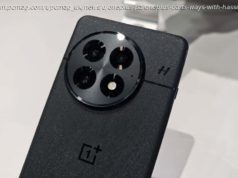The discovery of new Homo sapiens fossils has shown humans have been around for 100 million years more than previously thought; the 2017 NASA Astronaut Class; AI average scores; and 5nm transistors.
This week in science is a review of the most interesting scientific news of the past week.
Oldest Homo sapiens fossils discovered at Jebel Irhoud, Morocco
An international research team has discovered fossil bones of Homo sapiens alongside stone tools and animal bones dating to about 300 thousand years ago. The discovery is especially impressive because previously the oldest Homo sapiens fossils dated to about 195 thousand years ago and were found at Omo Kibish, Ethiopia.
Among the fossil remains found in Jebel Irhoud there are skulls, teeth, and long bones of at least five individuals. Also, the researchers have used the thermoluminescence dating method on heated flints found along with the bones to provide the precise chronology. Those flints and stone tools belong to the Middle Stone Age.
According to one of the leading scientists of the research team, Jean-Jacques Hublin from the Max Planck Institute for Evolutionary Anthropology:
The video below shows the composite reconstruction of the Homo sapiens fossils from Jebel Irhoud, based on micro computed tomographic scans of multiple original fossils, provided by Philipp Gunz, from MPI EVA Leipzig.
The findings were published in the following papers in the June 8 issue of the scientific journal Nature:
Source: Phys.org
NASA has selected 12 new astronauts
NASA revealed last Wednesday the 2017 Astronaut Class, which includes doctors, scientists, engineers, pilots and military officers. The Agency had the biggest pool of applicants ever, with more than 18,300 people applying for the job a year and a half ago. For comparison, the previous record was back in 1978, when 8,000 people applied for it.
The current class can be seen in the picture above and is composed of, from left to right, Zena Cardman, Jasmin Moghbeli, Jonny Kim, Frank Rubio, Matthew Dominick, Warren Hoburg, Robb Kulin, Kayla Barron, Bob Hines, Raji Chari, Loral O’ Hara, and Jessica Watkins. They have worked in submarines, emergency rooms, university lecture halls, jet cockpits and battleships during their trainings, and are aged 29 to 42. Here is a brief curriculum of each one of the new astronauts:
NASA already accounted for 44 astronauts, jumping now to 56. Even though US astronauts have not launched from their country since 2011, soon NASA, SpaceX, and Boeing will launch new spacecrafts and capsules capable of carrying astronauts to the space station and beyond.
Source: Phys.org
As already reported here at Neowin, an AI machine created by Zhunxingyunxue Technology from Tsinghua University, scored 105 out of 150 in an university math entrance exam last week. AI-MATHS, as it is known, has scored low because it struggled with language and some concepts, according to its creators. It is interesting to compare such results with the recent achievement of Google’s AlphaGo, which defeated all of its opponents, including Ke Jie, the current world number one Go player, during the « Future of Go Summit » in China.
Also, the Research Alliance, headed by IBM, has managed to squeeze 30 billion transistors into a fingernail-sized chip. This breakthrough was achieved by the development of 5nm transistors and the goal is to implement the technology in a wide range of devices, from smartphones to the Internet of Things (IoT) .






